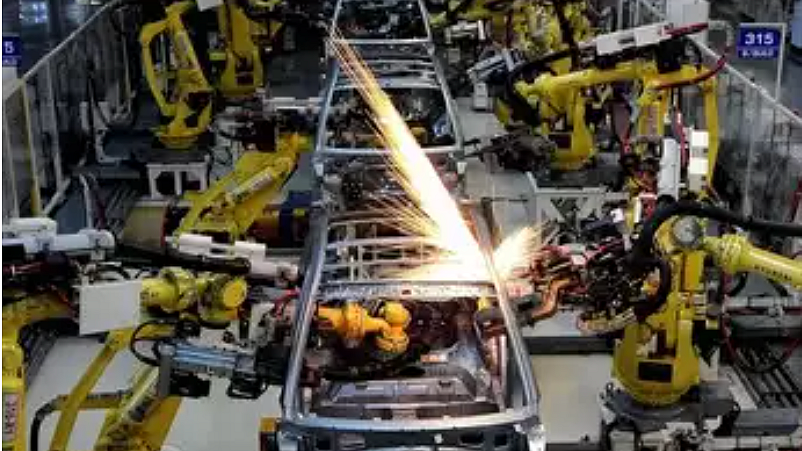Large population not enough to attract global manufacturing companies to India
Eighty percent of the population are poor and cannot consume products made by global manufacturers. It is not enough to have three ‘D’s, as the Prime Minister seems to believe

“We saw how a new world order was formed after World War II. Something similar will happen post-Covid-19,” “This time, India will ride the bus of manufacturing and integrating into global supply chains. We have specific advantages in the form of democracy, demography, and demand” Prime Minister Narendra Modi said in an interview to Economic Times, last month.
But two D's out of the "3 D's" are no more bankable assets for India. Demography will be an asset, only when the youth have jobs. With unemployment at historic highs, demography is turning into a wasted asset.
With India expected to post a negative GDP growth this year, the sagging domestic demand cannot drive a manufacturing boom. Out of India’s 1.3 billion population, 80 crore are poor or lower-middle income people who will not be consumers for pricey goods and services of US companies.
Global manufacturing companies do not enter a country just because it has a large population. The population needs to have sufficient purchasing power to consume their products. Indian people have only a fifth of the purchasing power of their Chinese counterparts. India’s per capita income is only USD 2,104 whereas China’s per capita income was USD 10,261 in 2019. China is both a producing and consuming country. For example, China is the largest market in Asia and the third largest market in the world for Apple. The recent departure of Harley-Davidson from India indicates that Indians cannot afford US companies’ goods.
"The government in April reached out to more than 1,000 companies in the U.S. and through overseas missions to offer incentives for manufacturers seeking to move out of China, according to Indian officials who asked not to be identified, citing rules on speaking with the media.
India is prioritizing medical equipment suppliers, food processing units, textiles, leather and auto part makers among more than 550 products covered in the discussions, they said " Economic Times published a glowing story in May.
Indian media was full of pomp and pride in April/ May about 1,000 US manufacturing companies that would be relocating from China to India amid the pandemic. US President Donald Trump’s move to blame China for its handling of the Covid-19 outbreak, which killed more than 1.3 million people worldwide, was expected to worsen global trade ties as companies and governments move resources out of the world’s second-largest economy to diversify supply chains.
But contrary to the media hype, a very small number of companies have actually entered India to date. First, not as many American companies moved their manufacturing plants out of China as both American and Indian strategists had estimated. Second, those companies that did leave China did not relocate to India.
“There are opportunities for India to try to gain a place in global supply chains, but this will require serious investments in infrastructure and governance,” said Paul Staniland, an associate professor at the University of Chicago. “My read is that the network, if it pans out, will look to India and Vietnam to replace China in the global supply chain network,” said Derek Grossman, researcher at the Washington-based RAND Corporation who held positions in the U.S. Intelligence Community for more than a decade. "But perhaps the U.S. has high hopes that India and Vietnam can quickly ramp up to at least equal Chinese capacity” he added.
In retrospect, it seems that India could not ramp up the manufacturing eco-system quickly enough to lure the US companies to relocate from China to India. The main reasons for global manufacturing companies for not relocating to India, analysts believe, include certain non-economic and governance-related factors prevalent in India and lack of skilled manpower.
Doing business in India is much more cumbersome than in China, because of red tape and lengthy formalities. Acquiring basic amenities required for manufacturing like land, water and electricity is not as easy as in other countries. India has less efficient infrastructure such as highway and rail networks, compared to China. India’s tax regime keeps changing and more compliance- oriented. India's labour force is not as skilled and productive as Chinese workforce.
As former US Assistant Secretary of State and President of the U.S -India Business Council (USIBC), Nisha Desai Biswal has pointed out, India needs to provide more incentives to US companies such as tax exemptions, ease of doing business, stabilizing the currency, and expanding consumer demand by rapid economic growth to become a global manufacturing hub. It takes more than hype and PR stunts to attract global manufacturing companies to relocate to India.
Follow us on: Facebook, Twitter, Google News, Instagram
Join our official telegram channel (@nationalherald) and stay updated with the latest headlines
